How To Grow Wasabi – From Clueless to Success
Unpopular fact: The green paste you’ve been eating with your Sushi probably isn’t Wasabi. 99% of the market (outside Japan) uses fake Wasabi which is a mixture of mustard, horseradish, and green food coloring. Why? Because real Wasabi is very expensive and most of us don’t even know that it exists.
In fact, fresh Japanese Wasabi is priced up to $250 per kilo. This is still reasonable, considering Wasabi’s difficulty to grow (especially on a commercial scale). It is very picky about its environment, temperature, humidity and takes two years to reach the stage of maturity. The best thing about growing Wasabi is that it has many numbers of health benefits along with the dominant flavor. Unlike fake stuff, real Wasabi is profoundly potent but will quickly dissipate to a lingering sweet taste with no burning sensation.
To enjoy such hot, delicious fresh Wasabi (and never forget the economic benefits), a lot of companies and home gardeners have taken the challenge of growing Wasabi plants. And if you think the same, keep on reading because this article will give the whole how to grow Wasabi information.
1. What is the real Wasabi plant?
Wasabi is a slow-growing vegetable in the Brassicaceae family, which also includes horseradish and mustard. The Wasabi plant likes very shady and very wet, but well-drained, environments and it grows naturally along cool spring beds in New Zealand, Japan and other parts of Asia. As we mentioned, the difference between Wasabi and other siblings is this does not need any coloring or other additives added to give you the typical sinus rush. Furthermore, Wasabi is noted for its strong antiseptic and antibacterial qualities and this is why it is traditionally served with raw fish.
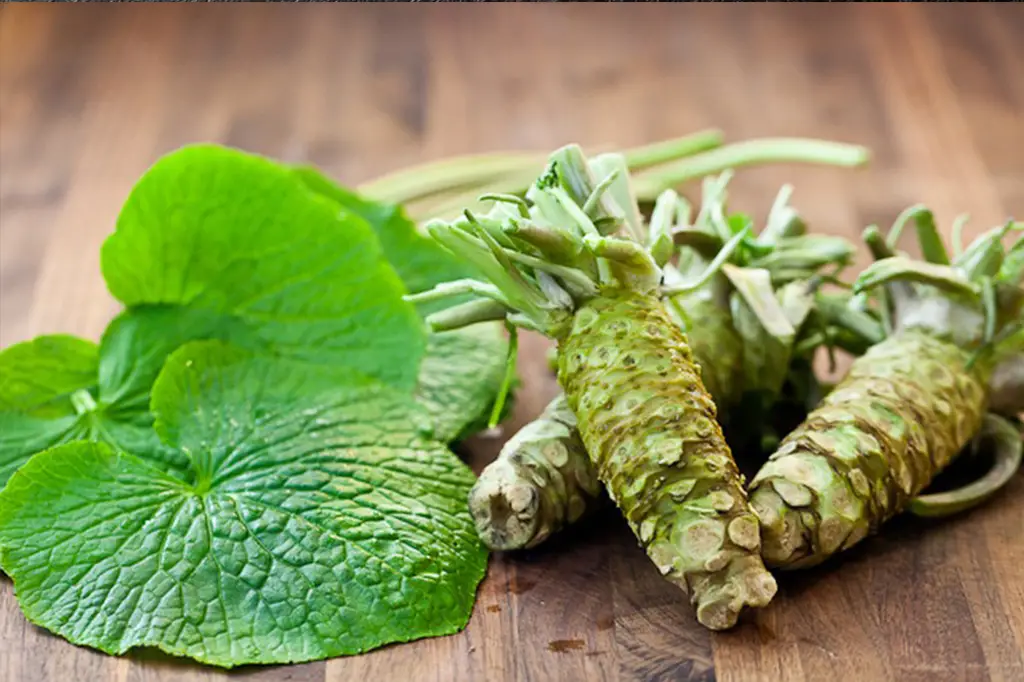
The rhizome serves as storage for the plant’s nutrients (similar to a potato) and is where the flavors tend to be most concentrated.
SEE MORE:
A well-established plant will comprise of a rooted, thickened stem (rhizome), long petioles and large heart-shaped leaves. The entire plant is edible, but the prized paste comes from grating the rhizome.
Here’s a very informative video of how real Wasabi plants are farmed in Japan.
2. How to grow Wasabi
2.1 Preparations
Shady location
In Japan (the origin/ country of Wasabi), this plant is so accustomed to shady river banks near high mountains that it has evolved to survive in very low light levels. It will need protecting from direct sunlight, which means you can plant Wasabi in these following places:
- On the farm with (of course) sunshade over the plants
- In a greenhouse or growing room (significant airflow over and through the plants)
- In your own garden or backyard, under over-hanging branches, behind a tall bush or on the shaded side of a fence or wall are all good spots.
- Yes, you can grow Wasabi in a port too. Our successful gardeners advise a 6-inch pot to start and then transplanting after a year to a larger 12-inch pot.
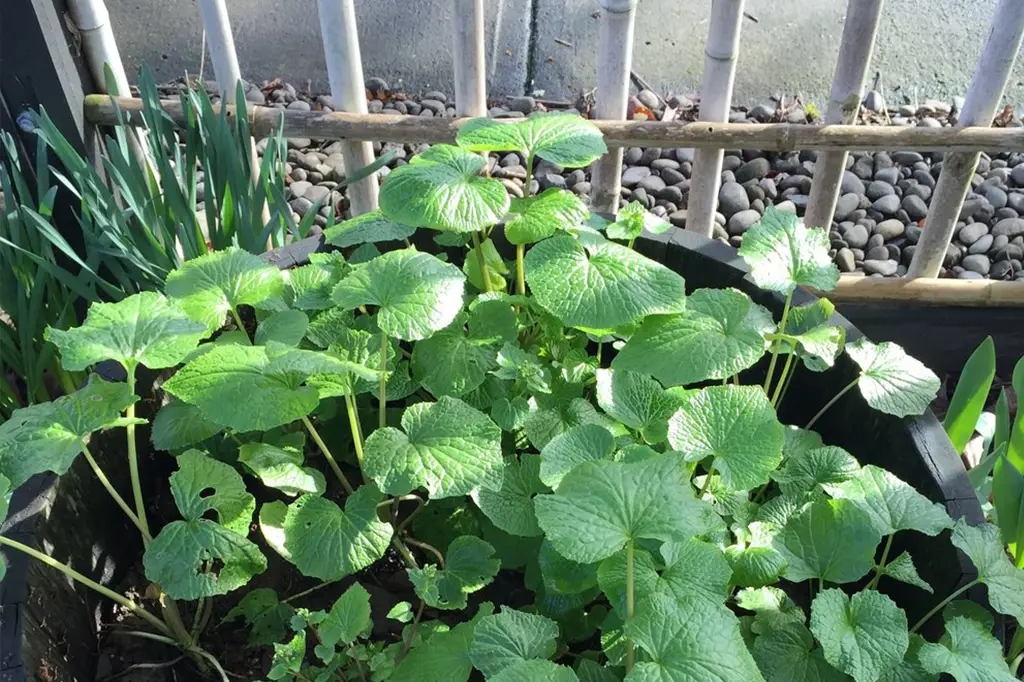
Choose a well-shaded area or you can make a shade structure with a tarp or a sheet.
Rooted shoots/ cloned plants
Wasabi seeds are usually unavailable because they are very hard to harvest. Most Wasabi seeds currently advertised for sale on the Internet are actually Mustard or weed seeds. Besides, due to the difficulty in actually germinating them, it is recommended that offsets from the previous crop or rooted shoots or cloned plants are used. These should be clean cloned plants or other virus-free plants from a reputable supplier.
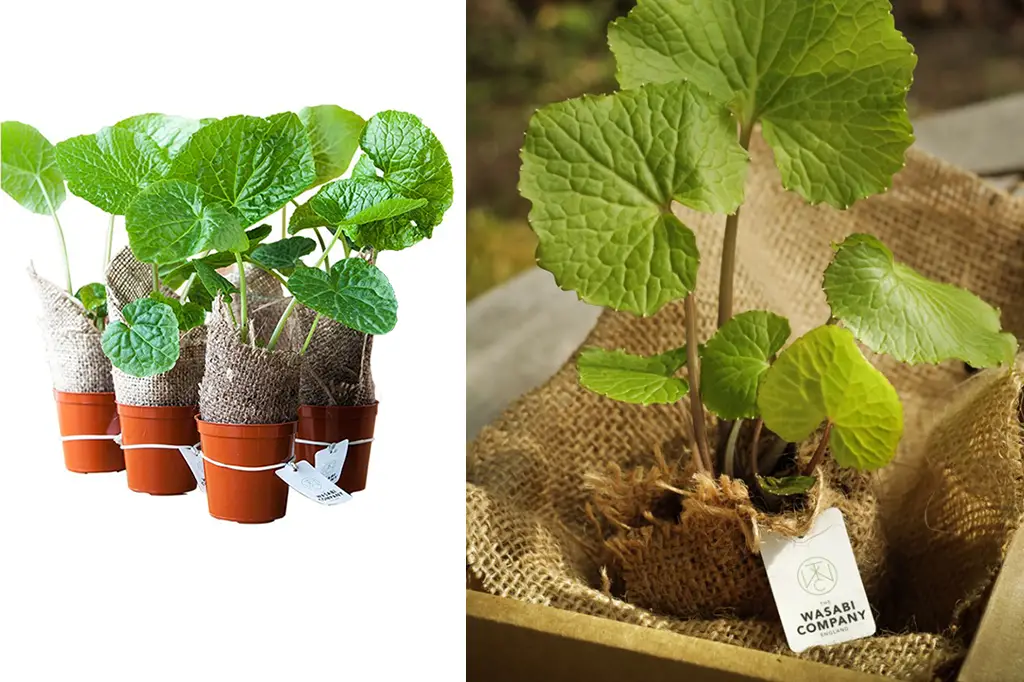
Wasabi seeds are very rare. You are much better off simply getting Wasabi plant starts and growing those.
Soil with fertilizer/ Gravels
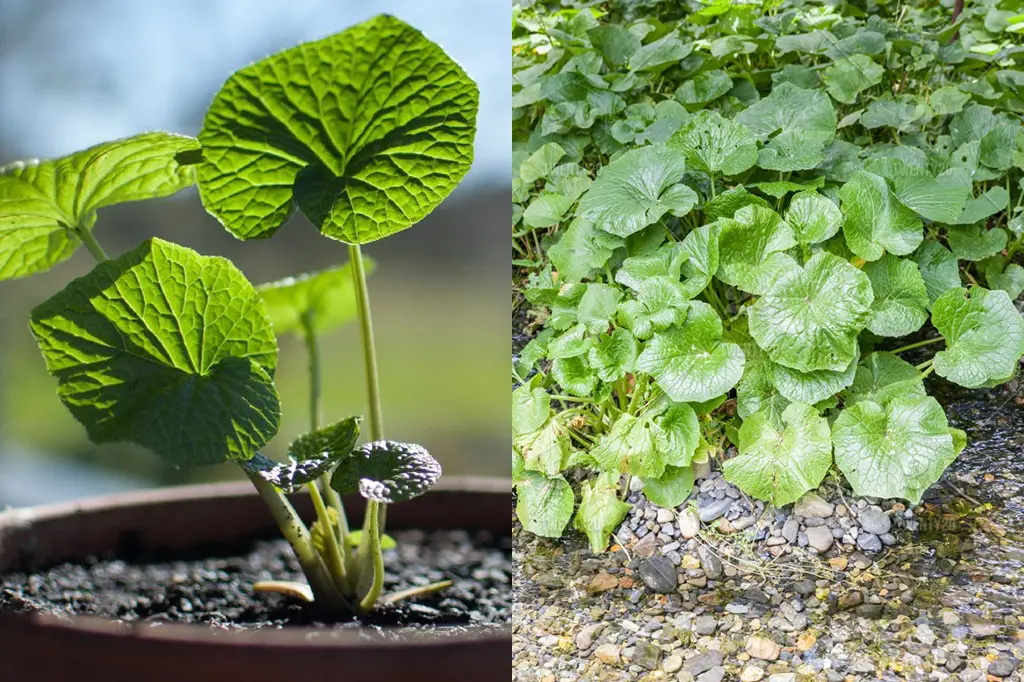
There are two ways to grow a Wasabi: on soil or gravels.
Wasabi can be cultivated on dry land, in light soil with organic material and sand in the bottom to increase drainage. Adding elemental sulfur also known as “flowers of sulfur” or aluminum sulfate to the soil is a common method used to increase the plant’s pungent taste. Make sure the soil drains well. Wasabi likes to be kept moist, but not muddy and waterlogged. To check whether the soil drains well enough, water the area well and watch the water soak in. If it’s slow to be absorbed, work in more compost. If it drains right away, the soil is fine for Wasabi.
Wasabi also grows in a semi-aquatic environment along stony riverbeds. If you have running water on your property or have an existing hydroponic system, you can use that water to cultivate Wasabi commercially. Otherwise, prepare a deep bed or large box-shaped planter (at least 5-7″ thick). Fill the bed with bigger stones approximately in diameter, leaving some space at the top. Cover the stones with a layer of rounded gravel the size of large peas. Finally, make sure there is water underneath.
2.2 Planting
After you have created the best growing environment possible, it is time to plant. Press the cloned plants in a light manner into the soil or gravels. It is important to remember to not bury the crown when planting. That means make sure at least 1/2 inch of the crown is above the soil so new leaves will emerge unhindered. Another mistake gardeners usually made is overcrowding planting. Regarding the average length of a fully-grown Wasabi plant, the spacing should be at least 24 inches.
2.3 Caring
Watering and fertilizing
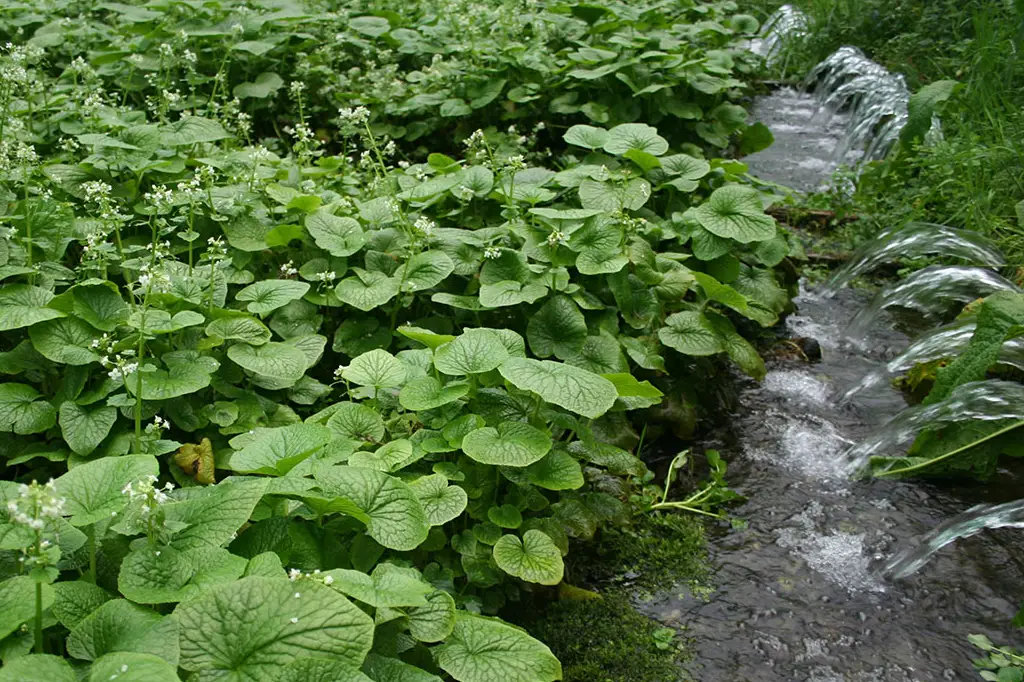
Mist your plants regularly or set up a micro-irrigation system.
It’s very important that you keep your plants moist year-round because they are semi-aquatic plants. If your plants are wilting, they’re not getting enough water. If you give them too much water, they can develop root rot. Watch them carefully and adjust your watering system accordingly. If you plant Wasabi on the ground, you should feed it with a top dressing of compost, manure or general-purpose plant food to promote the growth. One again, remember fertilizers high in sulfur are said to increase its flavor and spiciness.
Temperature
It generally requires a climate with an air temperature between 46°F (8°C) and 70°F (20 °C) and prefers high humidity in summer. Warmer growing conditions with result in leaf wilting reduced growth rates and eventually death of the Wasabi plant. Reducing the air temperature using fog or misting systems have been shown to be useful in reducing these air temperatures. Wasabi won’t survive temperatures down to more than –5ºC either. To protect it from those really cold nights, use some straw or fleece to cover the crown of the plant is a good idea.
If you grow Wasabi at home, a simple solution for both cases is to put your Wasabi plants on a pot. When the weather gets over or under the preferred range, bring your pots inside. If the weather is going to be over 70°F for just a few days and then go back to being under, you can leave the plants outside as they can handle warmer weather for a couple of days.
Pests, disease & other problems
Once established Wasabi is not unduly demanding and pests and disease are unlikely to be a problem in a healthy plant. The occasional aphid or some mildew may be seen but these are unlikely to threaten more than a few leaves. Slugs will eat Wasabi leaves so should be deterred and removed. A well established Wasabi plant will recover from a slug attack.
However, it is crucial to weed out competing plants so the Wasabi roots have plenty of room to grow. Since the soil is kept moist on a daily basis, weeds tend to sprout quickly. Weeding every day or every other day will keep the problem under control. If your shade is not sufficient in summer and you notice the leaves yellowing, provide more shade by growing a tall plant on the sunny side or fixing a piece of shade cloth above the Wasabi.
2.4 Harvesting
After 18 months to 2 years or when well-grown plants reach 24 inches in length, they will develop a harvestable rhizome. But before that time, some of the leaves can be harvested and eaten. These can be picked in small numbers throughout spring and summer to spice up a salad or fried in tempura batter whilst you wait for rhizomes to form.
Patience is a virtue with Wasabi and the reward of harvesting and grating your own fresh Wasabi paste. When harvesting, the whole Wasabi plant must be carefully removed from the growing media and remove the plantlets around the rhizome. These plantlets should be washed, dead or dying leaves can be removed and replanted for the next harvest. Break the roots off the rhizome and retain the stems and leaves (these can be eaten). After that, scrub the rhizome to remove the discoloration covering the surface of the rhizome.
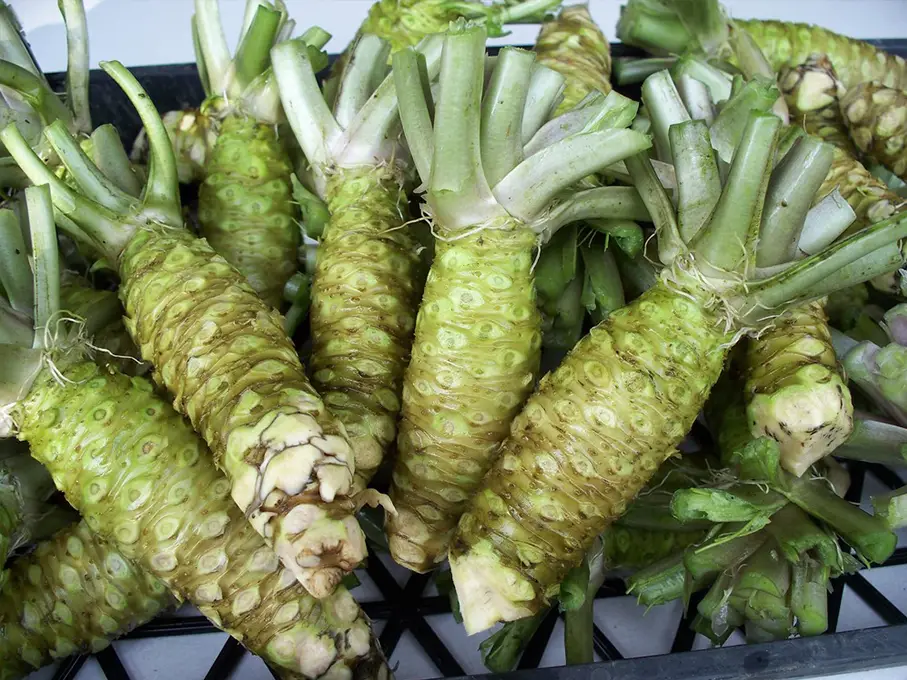
Pull the entire plant up and get the dense hair roots, plantlets removed with a sharp knife
Fresh Wasabi rhizomes have a limited shelf life and once cut from the plant should be refrigerated and kept in a damp atmosphere. In a refrigerator, they will keep up to 10 days, and freezing them destroys the cell structure and they lose their flavor.
Several rhizomes weighing 100g and more will provide you with a bountiful and eye-watering harvest to share with friends over sushi or in any of the delicious and original recipes we have created with an English twist.
For a wrap-up, here’s a video by Andrew Gardiner who grows Wasabi in a greenhouse.
>> Looking for food and drinks in Japan, visit here <<

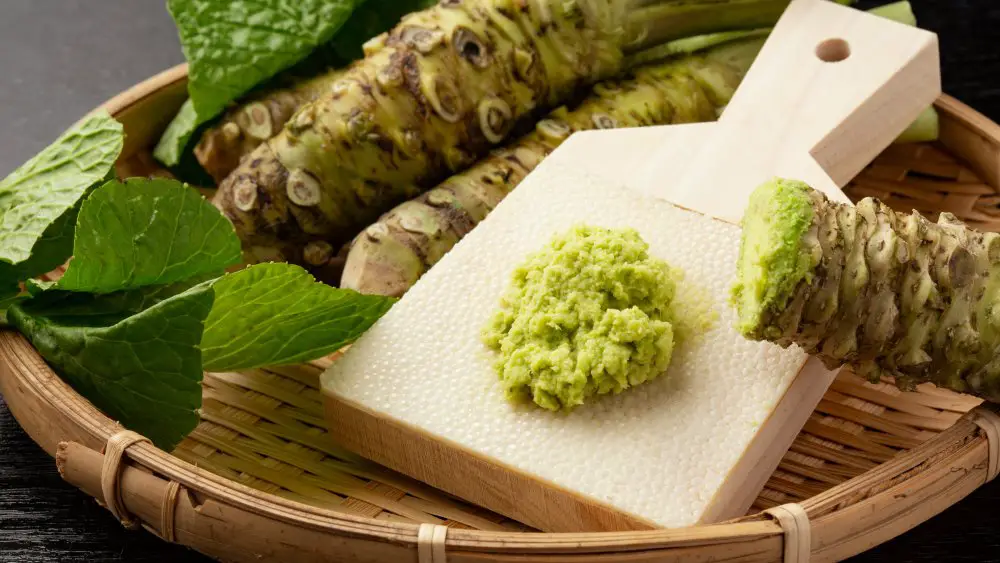








Thank you so very much for your wonderful blog. I live in Australia but have been to Japan and I am totally in love with every aspect of your culture. I am so very interested in growing wasabi and have a number of experimental plants currently growing. I would love to know who in Japan I can communicate with regarding growing and the possible problems I may have. Please take care and again, thank you.
Karyn